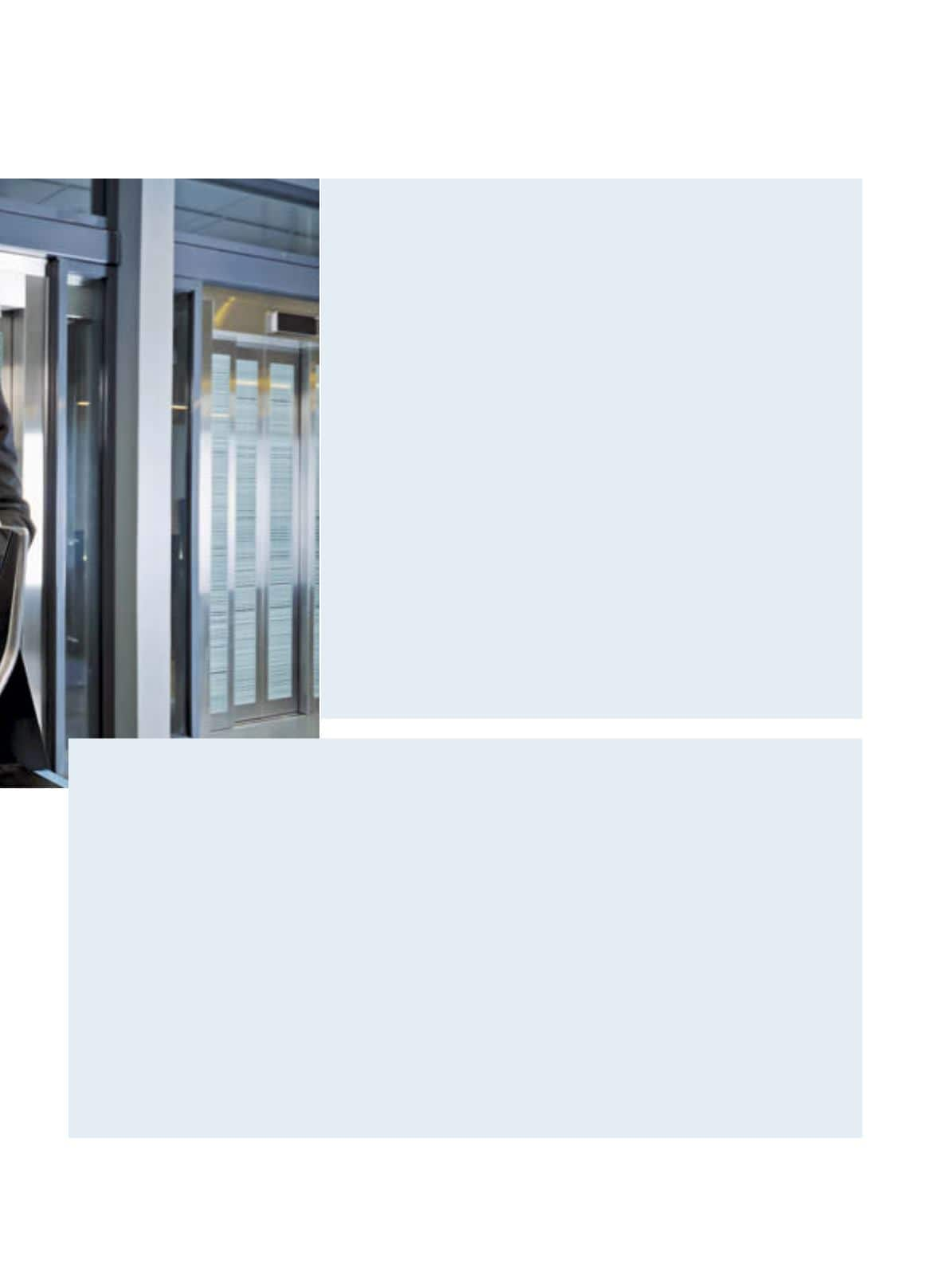

17
PEOPLE FLOW |
Many of us take for granted that
we can move through an unfamiliar
building without a problem. But
what if you did not have use of
your eyes? how would you find the
elevator call button? how would
you know when you have arrived
at the right floor?
“Elevators are the most chal-
lenging part of the building for
visually impaired people. A com-
bination of audio cues and tactile
guidance should come as standard
components,” says
hanna-leena
rissanen
, Accessibility representa-
tive for the Finnish Federation of
the Visually Impaired.
KONE collaborated with the
Federation in developing the new
KONE Destination Operating
Panel (DOP), a sophisticated control
system that replaces the traditional
up and down buttons with an
advanced touchscreen. Because
swiping is impossible for the blind,
the panel is equipped with a tactile
disability button that activates an
audio system. The device begins
to speak, inviting the user to select
a floor. A gong then directs the
passenger to the correct elevator.
rissanen describes the new
panel as more logical than anything
currently available. “The black-and-
white screen is also large enough
and offers clear contrasts. low-
vision people can see the numbers
quite well.”
Although rissanen applauds the
advances being made in inclusive
technology, it is early days as far
as building codes are concerned.
“Every device in every public
building should be equipped with
an accessibility button that activates
an audio system, combined with
tactile numbers and braille. This
should be required by law.”
eVery need is special
It is estimated that one billion
people have special needs related to
a disability. This presents a positive
challenge for KONE where even
the smallest changes can greatly
improve convenience for users.
Kirsti pesola
, Director of the
Accessibility Centre ESKE at the
Finnish Association of People with
Physical Disabilities, supports this
view. Pesola provides advisory
services and promotes professional-
ism on behalf of anyone with any
kind of accessibility challenge.
“My main message is that every-
one profits from good accessibility.
If wheelchair users can move
smoothly in a public space, so too
can large crowds and people with
heavy suitcases.”
Pesola welcomes intelligent desti-
nation control systems as very good
news for people with special needs,
especially elderly people challenged
by new technology.
“When everything is automated,
you don’t need to learn anything
new. The system recognizes you and
automatically takes you directly to
where you want to go.”
Investing in access-friendly auto-
mation also benefits the wider pub-
lic, she emphasizes. “When I come
home with heavy bags of groceries,
I would love to be whisked to my
apartment without having to press
any buttons or fish for keys.”
KONE’s design team meets at
least once a year with ESKE’s repre-
sentatives to hear their views and
gain input for new design solutions.
“We discuss button heights,
railing widths, and other accessibil-
ity details. KONE’s team recently
conducted a user experience study
among people from our organiza-
tion to gather ideas for future de-
signs. They have a long history of
listening carefully to the needs of
special groups,” says ESKE’s Acces-
sibility Ombudsman
harri leivo
.
accessiBiliTy For eVeryone



















